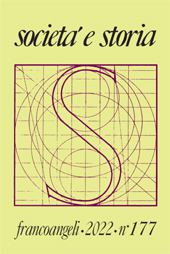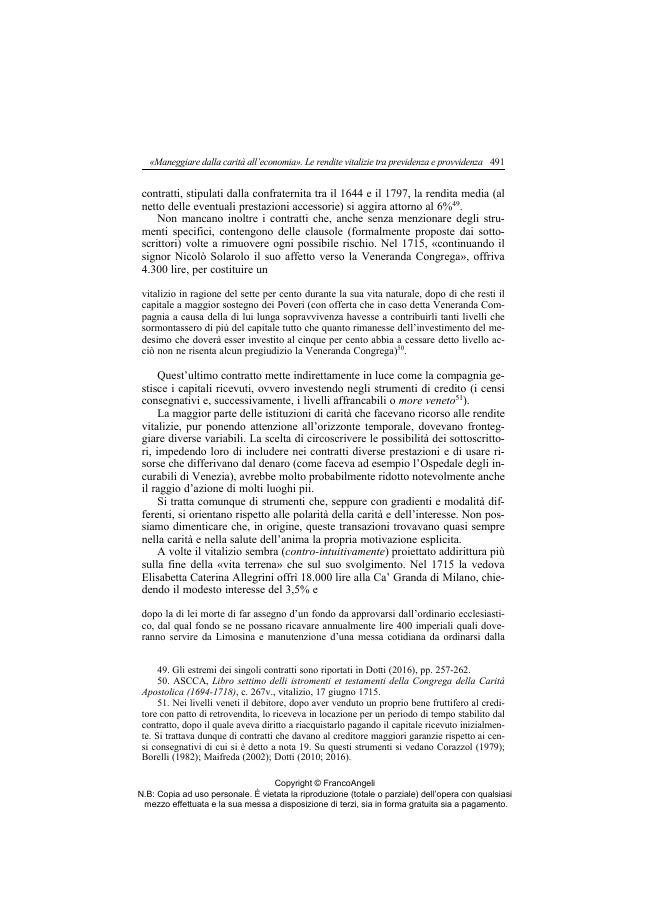«Maneggiare dalla carità all'economia» : le rendite vitalizie tra previdenza e provvidenza (Italia settentrionale, secoli XVII-XVIII)
P. 479-503
L'articolo si focalizza sullo sviluppo delle rendite vitalizie in antico regime, prendendo in considerazione i contratti stipulati da diverse istituzioni caritative nell'Italia settentrionale. Questi strumenti consentivano ai sottoscrittori di impiegare delle risorse (denaro, crediti, immobili) per costituire una pensione a proprio favore e/o a beneficio di terzi, includendo talvolta delle ulteriori prestazioni (esequie, messe pro anima, doti a favore di figlie o nipoti). Le rendite vitalizie costituirono, tra sei e settecento, un caso di studio e un campo di applicazione della nascente probabilità. Lo sviluppo di tali pratiche rappresentò dunque un punto di osservazione privilegiato sui processi di matematizzazione della realtà socio-economica, che consente di osservare la pervasività delle innovazioni, ma anche i fattori di resilienza ravvisabili nella prassi contrattuale.
Le fonti suggeriscono che l'introduzione delle tavole di sopravvivenza, pur rendendo in una certa misura prevedibile l'aspettativa di vita dei beneficiari, non assorbiva tutte le loro esigenze e soprattutto non poteva controllare altre incognite, connesse, ad esempio, alla natura e alla qualità del capitale impiegato per costituire le rendite. La molteplicità di istanze sociali impediva, nella maggior parte dei casi, di incasellare i contratti in una griglia precostituita e richiedeva invece una più articolata valutazione contestuale. [Testo dell'editore]
The article focuses on the development of life annuities in the old regime by looking at the contracts drawn up by different charities in northern Italy. Such instruments allowed their signatories to use resources (money, credits, real estate) to open pensions for themselves and/or for a third party, which might include other, additional services (funeral services, Requiem Masses, dowries for daughters or granddaughters). Between the seventeenth and the eighteenth centuries, life annuities were a case study and a field of application for the upcoming probability theory. The development of such practices became therefore a special observation point for the progressive mathematization of socio-economic life, which helps understand the pervasiveness of the innovation as well as at the factors of resilience that are inbred in contracting.
The sources suggest that the introduction of life tables, while making the life expectancy of the recipients somehow more predictable, did not reflect all their needs and, most importantly, could not control other unknown factors, such as those related to the type and quality of the capital allocated to such annuities. Due to the great variety of social expectations, in most cases contracts cannot be pigeonholed into a preestablished grid but require, instead, a more far-ranging assessment of each specific context. [Publisher's text]
Ist Teil von
Società e storia : 177, 3, 2022-
Artikel aus derselben Ausgabe (einzeln erhältlich)
-
Informationen
ISSN: 1972-5515
KEYWORDS
- Rendite vitalizie, probabilità, pratiche estimative, italia settentrionale, età moderna
- Life annuities, probability, appraisals, Northern Italy, early modern age.



